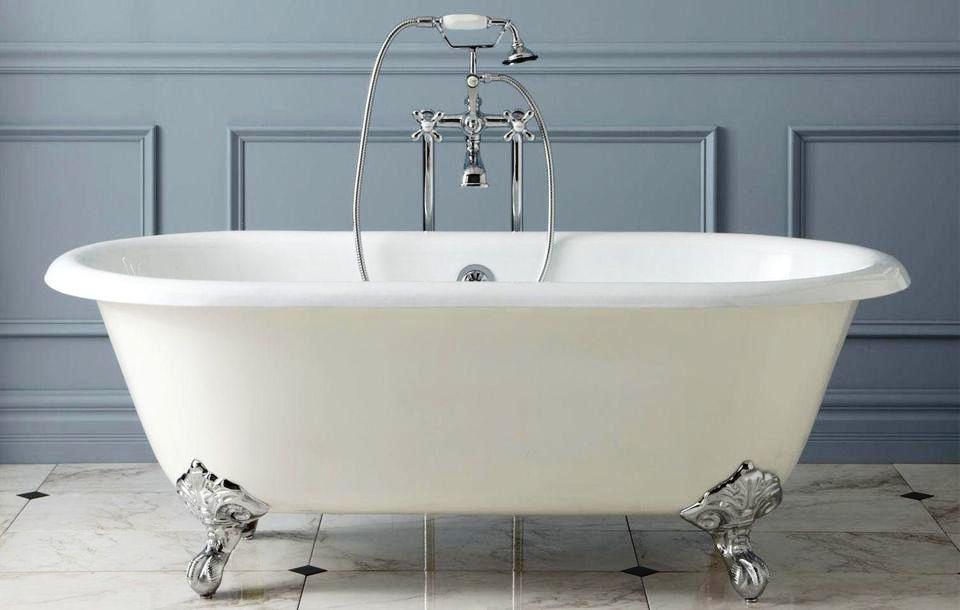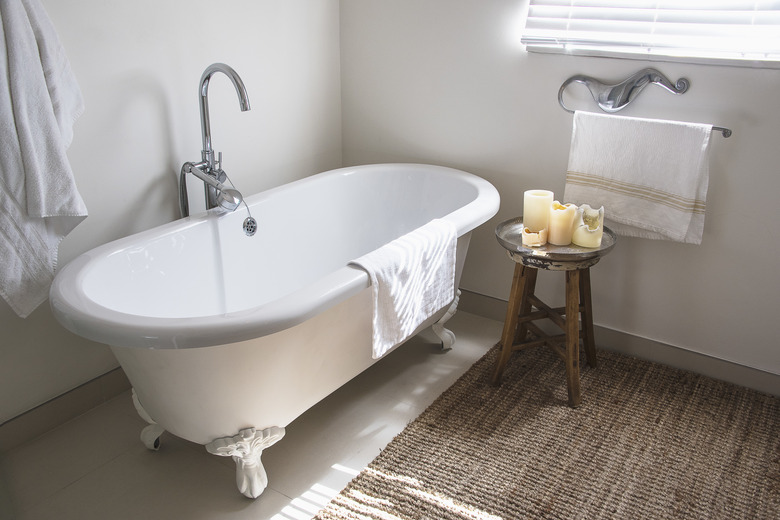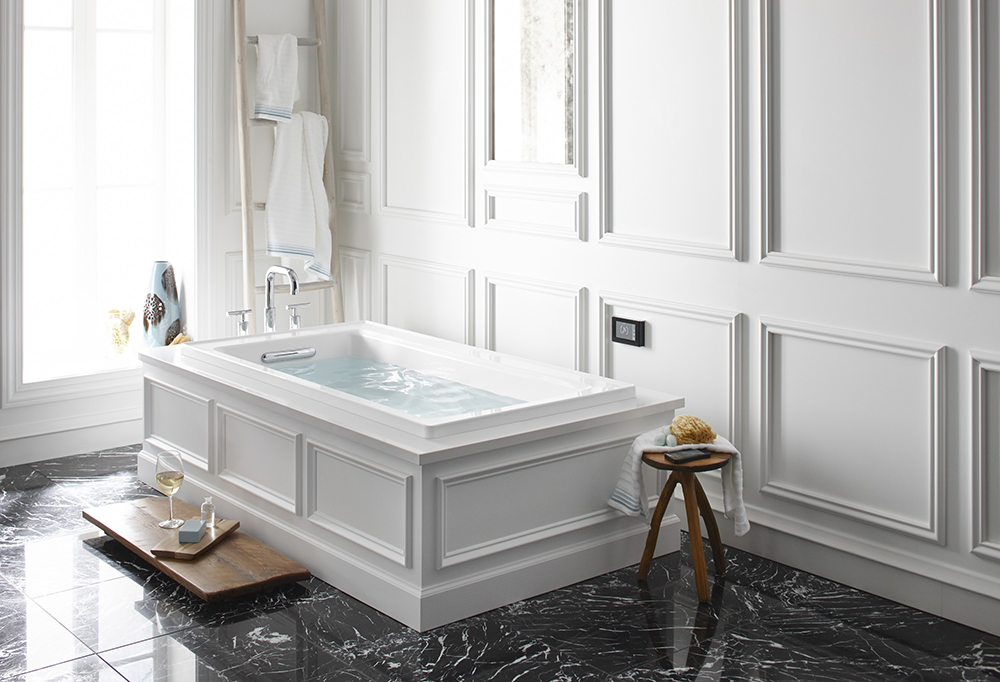Your bathroom is one of the most integral parts of your home. Over time its main features such as your bathtub can become less desirable. Cracked, stained or worn tubs indicate it may be time for change. But should you refinish it or replace it entirely? Whether refinishing it entirely or refurbishing is ultimately dependent upon budget, condition and goals.
Refinishing (also referred to as resurfacing ) your bathtub can transform it into something close to new. This process involves repairing cracks, smoothing out imperfections and applying a durable coat that gives a like-new appearance. Replacement on the other hand involves taking down and installing an entirely new tub. Although this might sound exciting it usually requires more time, cost and effort than refinishing does.

If you’re uncertain which option best meets your needs, we will discuss that here to help you explore both choices in detail. From exploring the advantages and drawbacks of refinishing to exploring when replacing might make more sense, we will assist in weighing all options carefully.
Read on to identify which path is right for you, your home and budget!
What Is Bathtub Refinishing?
Understanding the Refinishing Process
Bathtub refinishing is an economical way to give your bathtub new life. This process entails repairing minor damages such as chips or scratches before applying a shiny, brand new surface that makes your tub appear brand new again.
Professionals utilize special tools and coatings for this process. This process on the whole usually takes only hours without interrupting bathroom activities or having to move anything around.
When Should You Refinish?
Refinishing can be the ideal choice if your tub is functional but has cosmetic flaws like discoloration, minor cracks or surface scratches. Refinishing is especially popular among older homes as a means of saving unique vintage tubs that are no longer available commercially.
Additionally, it offers budget-conscious homeowners an alternative way to avoid construction projects in their home.
What Is Bathtub Replacement?
The Basics of Replacement
Bathtub replacement involves taking steps to completely swap out an existing tub with a brand-new one. This also includes renovations like retiling or plumbing adjustments. While more costly than refinishing, bathtub replacement offers opportunities for changing up your bathroom layout or upgrading to more contemporary styles and materials.
When Should You Replace?
Replacement may be necessary if your bathtub has experienced severe structural damage that refinishing cannot repair. For example, major cracks, mold growth or leaks can compromise its usability and safety.
Furthermore, replacing might also be appropriate if its current configuration no longer suits your style or functionality needs.
Comparing Costs
Refinishing Costs
Refinishing typically costs $300-600, making it a more cost-effective alternative to replacement. This price typically covers cleaning, repairs and the application of a durable finish. Though it’s not a permanent solution, proper care can extend its lifespan by 10-15 years.
Replacement Costs
Replacing a bathtub can cost anywhere from $1,000 to $5,000 depending on materials, labor and any additional renovations that might be necessary. Plumbing or structural changes will increase this cost significantly.
Though an investment-worthy, replacement provides lasting solutions with greater design possibilities and flexibility.
Time and Convenience
How Long Does Refinishing Take?
Refinishing tubs is typically completed within one day, making the process an efficient solution for busy homeowners. Once refinished, tubs are often ready for use within 24-48 hours, perfect for accommodating their schedules and busy lifestyles!
How Long Does Replacement Take?
Bathtub replacement may take anywhere from several days to weeks depending on its scope of work. Along with removing and installing a new tub, this process often includes tile work, plumbing repairs and post-installation clean-up. This is an undertaking which may significantly disrupt daily life.
Which Is More Convenient?
Refinishing is the superior solution if you want a quick, straightforward approach that won’t disrupt your daily life too much. Meanwhile, replacement can take more time. Refinishing may be sufficient for smaller remodeling projects or minor structural damages.
Durability and Results
How Durable Is Refinishing?
Refinished bathtubs typically last 10-15 years with proper care. Cleaning should include gentle use of nonabrasive cleaners, while sharp objects must be avoided to extend its longevity. Over time however, chipping may occur.
Replacement Durability
New bathtubs typically last 20 years with proper material quality and care, depending on material choice and care. Porcelain, cast iron and acrylic tubs tend to last the longest. Replacement certainly provides longer-term stability than refinishing.
Aesthetics and Functionality
Refinishing can revive the appearance of an older tub and give it new life, but won’t alter its size, shape, or style. While refinishing offers limited possibilities to customize aesthetics and functionality according to individual needs. Replacement offers more comprehensive upgrade potential.
Environmental Impact
Is Refinishing Eco-Friendly?
Refinishing tubs is more eco-friendly than replacing them. This is because it reduces waste by keeping old tubs out of landfills and eliminates production and shipping of new products. As a result, it cuts carbon emissions significantly.
What About Replacement?
Replacement can generate additional waste since the old tub must be discarded along with tiles and debris. However, you can reduce environmental impact by choosing eco-friendly materials for your new tub.
Which Option Is Greener?
Do you want the planet to be sustainable? Refinishing is the ideal eco-friendly solution when considering sustainability. Replacement should only be considered when absolutely necessary.

Making Your Decision
When to Choose Refinishing
Refinishing can be the ideal solution if your tub is in good condition but in need of cosmetic enhancement. Refinishing can provide budget-minded homeowners with quick fixes at an economical cost.
When to Opt for Replacement
Replacement should be considered when the bathtub has sustained serious structural damage or no longer meets your design and functionality needs. While more costly in the short term, replacement is always worth investing in for major problems.
Key Factors to Consider
- Budget: Refinishing is cost-effective while replacement incurs greater expenses.
- Condition: Refinishing can repair superficial wear while replacement can address more significant damage.
- Timeline: Refinishing takes less time while replacement may take longer.
- Style: Style-wise both options offer update or customization depending on personal preferences.
Conclusion
As always, choosing between bathtub refinishing and replacement depends on your individual needs. Refinishing offers quick, affordable results when making minor updates. However, in cases of serious damage or when wanting an overhaul design of the tub itself a new bathtub might be a worthwhile investment.
Consider taking your time when considering all your bathtub options to ensure you make an informed decision you’ll be pleased with for years. Consult professional refinishing and replacement experts for an honest evaluation of what’s best for your bathtub and home.
FAQs
What is the typical timeline for bathtub refinishing?
Professional bathtub refinishing services usually complete their work within three to five hours, and you should be able to use your tub within 24-48 hours after its refinished.
Can all bathtubs be refinished?
Not necessarily all bathtubs can be refinished successfully. Most bathtubs, porcelain, fiberglass and cast iron, can be refinished. However, severe structural damage might require replacement instead.
Does bathtub refinishing make financial and environmental sense when compared to replacement?
Absolutely. Refinishing is an eco-friendly and cost-effective solution for tubs in decent condition with some cosmetic wear. However, replacement is best in more severe cases.

